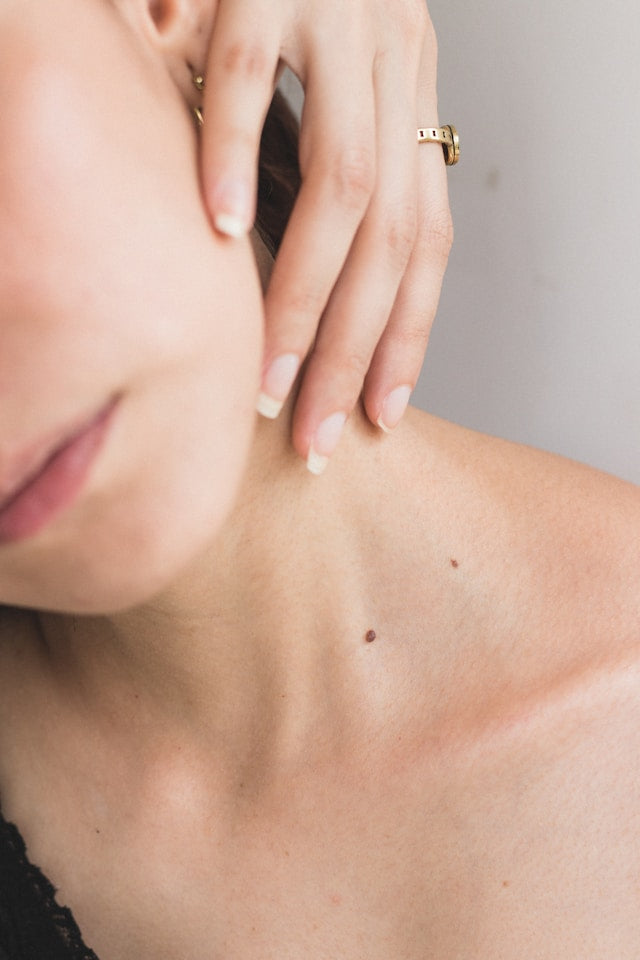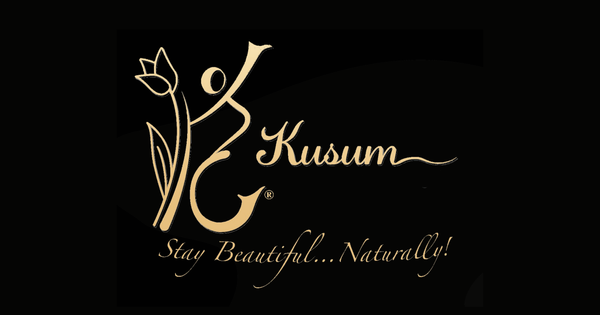
Skin Facts, Fun, Myths and More!
Share
We want to talk about taking good care of our skin, the largest organ of our body! And we will discuss skin facts, fun information, myths and more. Happy reading!
Have you ever wondered how skin manages to protect our inside organs?
How about protecting our skin from various external factors? What are these factors?
The ways of nature are wonderful. Let’s face a bit of a challenge and learn!
Why the skin exists?
The skin protects internal organs by providing a dry barrier.
Our skin protects against mechanical injury, heat and cold injury, microorganisms, radiation, and chemicals.
Skin Facts- Single Organ, Many Roles.
Our skin also regulates the temperature of our body by sweating.
It also responds to the temperature changes by changing the pattern of its blood flow.
Fine hair on the skin increases its sensitivity to fine touch.
The skin helps in making vitamin D. Nerves of the skin detect touch, heat and cold, and pain sensations.
The structure of the skin contains specialized cells called Melanocytes that are responsible for skin tone.
The versatility of Our Skin
How does our skin manage to perform so many functions? The answer resides in the layers of the skin!

* The skin has three main layers. The outermost layer is the epidermis. It has many layers of cells with the oldest cells on the outside and the youngest cells on the inside. The epidermis also provides a dry, waterproof barrier.
* The second layer is the dermis. The dermis has connective tissues, hair follicles, and sweat glands.
* The third layer is the hypodermis or subcutaneous tissue. The hypodermis has fat cells, blood vessels, and connective tissue. The nerve endings also live in this layer.
Underneath these layers lays the muscle of the skin. The muscle causes movements of the skin such as shivering and feeling of tense skin during cold weather.
Skin Facts and Fun
1) The skin is the largest organ of our body.
2) The skin covers about 2 square meter area of our body on an average.
3) It has more than 250 million cells.
4) It weighs 10 lbs. and has more than 10 miles of blood vessels.
5) The skin varies in thickness. The thinnest skin (0.2 mm) is present on the eyelid and thickest on the feet (1.5 mm). But, repeated friction increases the skin’s thickness by forming a “callus”.
6) The skin sheds the outermost cells (about 40,000 old or dead skin cells every minute). Our skin renews itself completely every 30 days.
7) The skin’s pH is acidic, ranging from 4.5 to 5.5. This acidity helps our skin fight against many dangerous pathogens.
8) Our skin is home to more than 1,000 kinds of microorganisms such as bacteria and viruses.
9) Any breakage of the skin heals with dense, fiber-like tissue (fibrous tissue) called a scar.
10) Skin represents your health, dietary pattern, and mental status. Read further on diet and skin health below.
Factors affecting the skin
Our skin receives nutrition through the bloodstream. The skin needs sunlight to make Vitamin D. Several factors affect our skin health.
A touch on diet and the skin
Our body shows pretty much what we eat.
A healthy diet helps the skin fight aging. Vitamin C, Omega 3- fatty acids, Zinc, and Vitamin E are well known for skin nourishment.
Skin Facts- Skin friendly foods!
But, a diet rich in trans fats, sugar and decreased activity adds oxidative stress on the skin. This stress makes the skin age faster and causes wrinkles early.
Stress, anxiety, and lack of sleep affect skin health by reducing moisture and causing dryness, wrinkling and sagging.
Myths about the skin
Now we know a bit about the structure of the skin, its functions, and its favorite nutrients.
We also learned what factors affect our skin in good and bad ways.

let’s look at several myths about skin and skincare treatments.
1) Creams claiming anti-aging substances can keep the skin looking young.
The cosmetic industry is a $532 billion industry.
Our markets are filled with thousands of products claiming various antioxidant, anti-inflammatory, and anti-aging capabilities.
The cost of the product is driven by the brand name, marketing, and appearance of the product.
Most of such claims are untested, unproven and has no scientific data behind them.
2) Cleaning the skin with antibacterial soap is better than regular soap.
The skin is home to many microorganisms, including bacteria and viruses.
Many of these creatures are useful and take part in skins’ function.
Some of these microorganisms even protect us from other harmful bugs.
It is not possible to keep the skin completely free of bacteria or other organisms; it is not necessary.
Keeping your skin clean with regular soap is just fine.
Good and frequent hand washing prevents most infections.
3) Hot water provides better skin cleanse.
We feel great while taking a hot bath, don’t we?
Actually, hot water will strip the skin of its natural protectants (such as oil) and leave your skin very dry.
If your skin looks red after a wash, the water was too hot. Simple.
Skin Facts- Use lukewarm water for cleaning the skin.
4) Rubbing hard with a scrub means better exfoliation.
Ideal exfoliation removes the most superficial layer of the skin.
Hard and repeated rubbing of any type of scrub will injure the younger, budding cells.
The young skin cells give you that great look, but you end up damaging them by friction!
The best exfoliation is the gentle one.
5)The price tag of a product speaks for its quality.
The brand name, aggressive marketing, and popularity drive the cost of a product.
Remember that gorgeous looking bottle with a shiny label claiming the ultimate cure?
You do. Remember its price tag of $130 for 0.5 Oz product?
A good cosmetic product is driven by the quality of its ingredients and how it helps reach your goals without causing harm.
Now, there is a price tag to this achievement and there is a reasonable method to assess the quality of a cosmetic product without having to use it.
A proper understanding of the label of the product is essential to identify a good product.
6) If a product is labeled “natural” or “chemical-free”, it must be good for me.
First of all, one needs to determine if you are allergic to any ingredient listed on a cosmetic product.
Natural or not, allergic reactions can be serious and therefore carefully read the back panel for a list of ingredients.
A label claiming chemical-free has a vast definition (or lack of thereof) and does not exclude chemicals introduced in its base ingredients.
Improperly preserved, “natural” products can promote bacterial growth. As a result, it may cause problems for you.
In general, reading the label thoroughly helps you understand the content and quality. It also helps you set your expectations out of using the product.
Make sure to thoroughly read the label on the backside of the product. Why?
Because it is the most important source of this information!

Read more about how to analyze a product label here.
Cosmetic Terminology
Last but not least, we want to discuss several terms used in the cosmetic and skincare world and their meaning.
* Acidic- normal skin pH ranges between 4.5-5.5. The neutral pH is 7. Any number lower than 7 is acidic. What is pH?
* Alkaline- any pH number greater than 7 is Alkaline.
* Antioxidant- a substance that reduces free-radical damage. In reality, most cosmetic products claiming to be “antioxidant” are not proven by scientific means. Avoid such marketing words while evaluating a product.
* Emollient- a substance that increases water levels in the skin, also known as a moisturizer. An example here.
* Essential oil- an oily substance extracted from the plant while preserving its fragrance.
* Flavonoids- substances found in pigmented fruits, vegetables, nuts, and the seeds. Some claim they possess antioxidant properties.
* Fibroblast- a cell responsible for collagen production and keeps the skin plump.
* Fragrance- a natural or chemically produced compound used as a scent.
* Free radicals- substances generated in our body by excessive sunlight, smoking, pollution, and unhealthy diet causing skin damage.
* Fruit enzymes- mild substances derived from fruit for gentle exfoliation by breaking down keratin of the skin. An example here.
* Humectant- a moisturizer.
* Gel- a thin, pasty substance/product. An example here.
* Lotion- a thin product made with water, oils, and butter for application on the skin for moisturizing, and improving dryness. An example here.
* Cream- thicker product compared to lotion, particularly for very dry skin. An example here.
* Body butter-Shea or other butter for dry skin, and areas with naturally thick skin (palm of hands, sole of feet). An example here.
* Body balm- a cream without water!
* Serum- a deep moisturizer. An example here.
* Toner- a product claiming to improve skin tone and texture. They come in all forms- creams, serum, oils, lotions, and gels!
* Hair oil- various oil preparations used to promote hair health and growth. An example here.
Suggested reading:
In summary, our skin is a showcase of our body and taking good care of our skin is essential for wellbeing.
We hope that you found this blog post informative and useful. Don't forget to routinely visit our blog and share it with your family and friends. Feel free to leave a comment below!
Disclaimer- This website and any of its content, comment, writing or authors/contributors/writers do not provide or suggest a medical, legal or professional advice, opinion or service. The information shared on this website is not intended to diagnose, treat, cure or prevent any disease.
